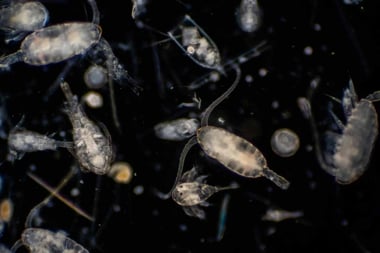
In 1913 Scottish surgeon Thomas Kennedy Dalziel proposed that a bacteria called MAP could cause Crohn's disease. Could antibiotics help patients with Crohn's?
Every time I arrive at my doctor’s office for an appointment, the first thing I do is ask to see the latest pictures of the receptionist’s gorgeous grandchildren. The last time she pulled out her ever-growing album, it was with an uncharacteristic air of sadness.
“The littlest one was just diagnosed with Crohn’s,” she told me. “It’s devastated our entire family. He’s always been small for his age, and now he’s barely grown at all in the last year. He’s so brave, but it’s awful for us to watch him suffer. He’s practically been living at the hospital for the last few months, and now they’re talking about surgery.”
I didn’t know what to say. As a physician I understood, and had witnessed, the pain and suffering associated with this illness. I searched for words of encouragement or advice, but came up empty. This was before I’d heard of the potential link between Crohn’s disease and bacteria called Mycobacterium avium paratuberculosis (MAP).
The progression of Crohn’s disease
Crohn’s disease (CD) is a condition that attacks the body’s intestinal system, from the mouth to the anal area. Sufferers experience abdominal pain, fatigue, weight loss, mouth ulcers, and joint pain. Physical and psychological stress can trigger this disease, and as demonstrated in the story of the receptionist’s grandson, CD can slow or arrest growth and sexual maturation in children.
Medical experts have pondered the cause of this debilitating illness since its emergence as a new disease in the early 20th century. Most authorities today view CD as an autoimmune disorder, in which the immune system reacts against normal bowel flora (bacteria) and attacks the intestinal tissues in a genetically susceptible individual.
The origins
According to a leading CD researcher, British surgeon Dr. John Hermon-Taylor, CD “began by appearing in developed societies in temperate regions of the globe, with intensive farming.” Rates of CD, most prevalent in North America and Europe, have steadily increased over the decades. Today CD is estimated to affect between 400,000 and 600,000 people in North America. The region with the highest incidence worldwide? Manitoba, Canada.
Crohn’s and MAP–The Cow Connection
In 1913 a Glasgow surgeon named Thomas Kennedy Dalziel described a possible connection between Johne’s disease (an intestinal disorder common to cattle and other livestock) and cases of chronic intestinal inflammation in humans. Cows with Johne’s demonstrate many of the same symptoms and tissue changes found in humans with CD. Dalziel proposed that MAP, the bacteria that causes Johne’s, could be the cause of CD. Experts have hotly debated this theory, ever since.
Infected cows secrete MAP into milk or deposit it in pastures through feces. According to a paper by North Dakota State researcher J.C. Uzoigwe, published in Epidemiology and Infection, up to 40 percent of American dairy herds may be infected. Hermon-Taylor reports that pasteurization procedures may not completely destroy the bacteria.
The rising rate of Crohn's
Epidemiologists have observed that CD rates are rising in countries that used to have a low incidence of the disease, such as Iran, India, Brazil, China, and Japan. Hermon-Taylor notes that these countries have significantly increased their production and consumption of dairy products.
Why has it been so hard to confirm, once and for all, that MAP is the cause of CD?
Problems mapping MAP
MAP belongs to the mycobacteria genus, which includes the bacteria that cause tuberculosis and leprosy. MAP is incredibly difficult to detect through typical methods–it can take months or even years for a culture sample to prove positive.
Scientists have developed different methods of detecting the bacteria in CD patients, with varying results. As reported in a 2007 issue of Microbes and Infection, researchers from McGill and McMaster Universities, using a technique called oil-immersion microscopy, found a strong association between the presence of the bacteria and subjects with CD.
The MAP theory: Changing CD treatment?
Standard CD treatments, such as steroids and other drugs that affect the immune system, can have terrible side effects, and don’t always work. Patients often end up losing large portions of their intestines to surgery. In an article titled “The New Paradigm for Crohn’s Disease: A Call to Action,” three physicians personally affected by CD compare the effectiveness of traditional treatments to “treating tuberculosis with surgery, sanitariums, and mountain air?in other words, the physicians of the future may look back on today’s traditional CD treatments and consider them to be largely ineffective and out-of-date.
Experts who support the MAP theory of CD have tried various combinations of antibacterial medications (antibiotics), to see if they might help patients. It took medical experts years to find the right combinations of medications to treat Mycobacterium tuberculosis; the same has proved true for its brother, MAP.
Studies into CD
In a 2007 study published in Digestive and Liver Disease, researchers gave an anti-MAP cocktail of antibiotics to 52 patients with severe CD. In more than half of the patients, researchers found that the treatment caused a type of scarring that most likely indicated a profound degree of healing.
The physician authors of the call to action reported similar experiences: Dr. Judith Lipton has been in remission ever since her severe CD was treated with antibiotics; Dr. Todd Kuenstner’s 9-year-old son Will was successfully treated shortly after his diagnosis; and Dr. James Biesecker’s son 14-year-old Tristan experienced a similar antibiotic-induced remission. Today 17-year-old Tristan is a nationally ranked tennis star.
A promising lead for future study
Hopefully, the story of MAP and CD will turn out to be similar to that of the discovery of H. pylori as the cause of ulcers. Experts first resisted the theory, but now millions of ulcer sufferers benefit from doctors confidently treating the bacteria known to cause the disease. At the very least, I now have some hope to give my doctor’s receptionist and her precious young grandchild.




